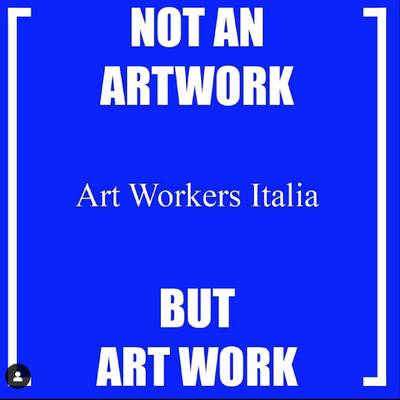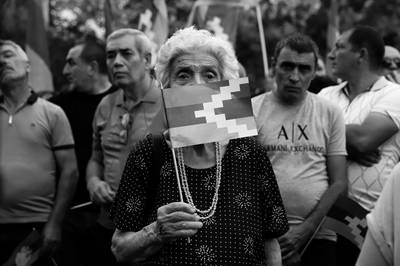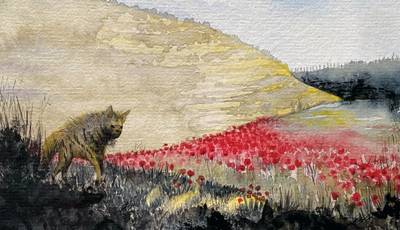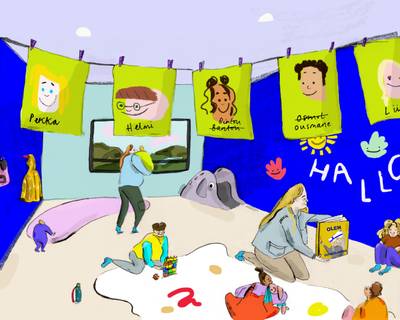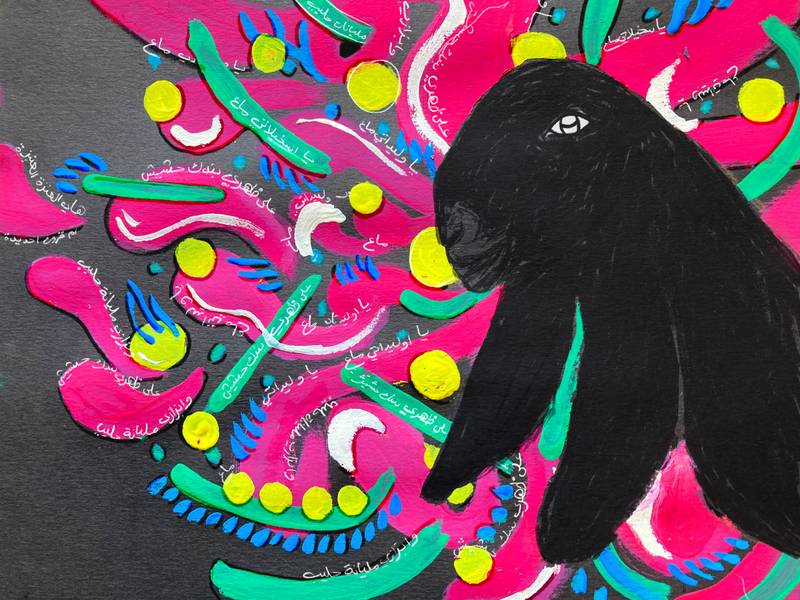

Illustration: Shaden Abed-elal, 2023
Sanabel Abdelrahman is a postdoctoral fellow at MECAM/Tunis University. Her research focuses on magical realism in Palestinian literature. She completed her doctoral degree at Philipps-Marburg Universität and her Bachelor’s and Master’s degrees at the University of Toronto. She is interested in cinema and visual arts. She is a writer of fiction and essays.
On July 8, 1972, prolific Palestinian writer and revolutionary Ghassan Kanafani, who was only 36 years old, got into his car with his 12-year-old niece, Lamees. Within seconds, the car blew up, and both were instantly martyred. The assassination, which happened in Lebanon, was carried out by the Israeli National Intelligence (Mossad). This enraging and tragic example of Israel’s obsessive killing of all forms of Palestinian life is one among too many. Yet, the assassination of Kanafani, a literary icon, in such a bloodthirsty and vengeful way exposes Israel’s implicit paranoia of Palestinian literature.
In addition to being a prominent revolutionary figure, a leading member of the Popular Front for the Liberation of Palestine, and a prolific writer of fiction and literary studies, Kanafani was also a firm believer in the incredible power of literature-especially as a tool of liberation. In his seminal book, Adab al-Muqāwama fī Filasṭīn al-Muḥtalla 1948-19661 (Resistance Literature in Occupied Palestine 1948-1966), Kanafani insists on the agency inherent in writing. He argues that despite the brutal Palestinian reality under Israel’s settler-colonialism, “the word does more than fire and can pierce its own siege”2. Kanafani believed that popular poetry plays an active role in resistance as well as weaponizing traditional wisdom and turning it into a form of resistance literature. For him, the most pivotal role that resistance literature plays, as he repeatedly reiterates in his book, is that of taḥaddī (defiance or confrontation).
With the view of resistance literature as one that defies and confronts the ongoing repercussions of the Palestinian Nakba3, especially in exposing the violence of the Israeli state while making room for Palestinian agency and collectively summoning liberated futures, I argue that magical realism fulfills such roles through increasingly innovative applications. Magical realism, a highly elusive term, is broadly defined as “fiction that mixes and disrupts the ordinary, everyday realism with strange, ‘impossible’ and miraculous episodes and powers… [Works of literature that] rework folk and fairy tales to create a particular kind of magic realism that mixes the modern and the mythical”4. Where can we find manifestations of magical realism in ways that fulfill the roles of resistance literature? What tropes and figures are employed to achieve the act of resistance?
Among the poetic themes that Kanafani annotates under resistance literature in his book is that of mobile, sentient trees who share a deep and eternal connection to their human counterparts, the Palestinians. Kanafani sheds light on this literary phenomenon by referencing poet Mahmoud Darwish’s widely recognized poem, ʿĀshiq min Filasṭīn5 (Lover from Palestine), in which Darwish wonders why the green bayyāra (grove) is being dragged to prison, to exile; how it remains evergreen despite its journey and the poignant perfume of longing. The poet personifies the tree and uses its most banal characteristic, its greenness, to insist on Palestinian resistance and perseverance by alluding to the organic and post or ultra-human relationship that Palestinians have with their natural landscapes.
Accused of being “shrewd, rogue, ill-mannered and undisciplined”, the black goat was constantly abducted and killed to prevent it from distorting the European landscape that Israel wished to create on the rubbles of the destroyed Palestinian one. In 1948, the year of the Nakba, Israel began importing a white Swiss goat to replace the black one. The white European goat was described as “polite, beautiful, healthy” and even “civilized”.
By making this kind of nuanced comparison and complex projection, Darwish humanizes Palestinian trees and implies they are one with the Palestinian people. And so, in the Palestinian literary tradition, trees are transformed into an emblem of agency, solidarity, and perseverance. Even though Kanafani does not delve into an analysis of this literary phenomenon, which I refer to as ‘eco-surrealism’6, his inclusion of this example in the book hints at the incredible potency of those magical-realistic connections between Palestinians and their natural spaces.
Outside literature, the othering of the black goat, an animal indigenous to Palestine for thousands of years, reflects this inversion of the eco-surrealistic relationship between people and the land. Extending the British Mandate’s laws, the Israeli state maintained the law prohibiting the possession and herding of the black goat. This law was based on alleged claims of the goat’s detrimental effect on the environment as it consumed many more plants than other animals. Accused of being “shrewd, rogue, ill-mannered and undisciplined”7, the black goat was constantly abducted and killed to prevent it from distorting the European landscape that Israel wished to create on the rubbles of the destroyed Palestinian one. In 1948, the year of the Nakba, Israel began importing a white Swiss goat to replace the black one8. The white European goat was described as “polite, beautiful, healthy”9 and even “civilized”10. This hatred expressed in portraying the Palestinian black goat as an “evil creature”11 masqueraded under ‘scientific proof’12 regarding its effect on the ‘Israeli’ environment really spurred from resentment regarding the black goat’s freedom and mobility. Unlike the Israeli settlers, the black goat possesses thousands of years of knowledge of Palestinian land and can, therefore, ‘trespass’ into ‘Israeli’ territories when seeking food13. The black goat, which was accused by Israeli writers, journalists, politicians, and the public of being anti-Zionist14, was allowed back into Palestine’s natural landscapes by the settler-colonial state following the eruption of wildfires as a result of the state planting pine trees15 that recalled its European origin. The black goat would trim the trees, prevent wildfires, and maintain the ecosystem. Such precipitous inversions of the relationship between colonial settlers and the land in ‘real’ spaces contrast deeply with the benign, intimate, and magic-infused eco-surrealism that connects Palestinians with their indigenous land.
Like magical trees, some of the main liberatory protagonists in Palestinian magical-realistic texts are ghosts. Ghosts repeatedly appear in Palestinian contemporary literature not as passive byproducts of Israel’s settler-colonialism but as active agents of their own and their people’s liberation. Often, those ghosts emerge from the martyred Palestinians’ bodies and fulfill the role of constantly reminding Palestinians of what happened to them at the hands of the Israeli state. By reminding the Palestinians of the ongoing practices of Nakba, these ghosts keep the vigor of revolution and the urgent drive for liberation alive in the minds and souls of living Palestinians. This complements the observation around Latin American literature that “literary ghosts will tell us a great deal about their authors’ metaphysics, politics and poetics… ghosts carry the burden of tradition and collective memory… as links to lost families and communities… as reminders of communal crimes, crises, cruelties.”16
Yet, for ghosts to effect such a change in the material world, they need to be seen, heard and believed to exist. This is where the fluidity and potency of magical realism as a literary mode play a significant role. Due to a literary phenomenon called ‘naturalization’17, in which magical instances are presented as natural or even banal, ghosts planted in the fictive space are ‘real’ in the sense that they are seen and heard by their people. Not only that but in several Palestinian literary texts, ghosts are protected by the living Palestinians from the voyeuristic gaze of (usually European) bystanders who fetishize the Palestinian Nakba without sympathizing with the Palestinians as a people practicing real decolonization.
Like magical trees, some of the main liberatory protagonists in Palestinian magical-realistic texts are ghosts. Ghosts repeatedly appear in Palestinian contemporary literature not as passive byproducts of Israel’s settler-colonialism but as active agents of their own and their people’s liberation.
In several Palestinian literary texts, the martyrs return in the form of ghosts who can ‘infiltrate’ or go back to the spaces from which they were expelled or killed. Darwīsh, dubbed “shāʻir al-muqāwama” (the poet of resistance), tells us in an eponymous poem in his book Ḥālat Ḥiṣār (A State of Siege) that “al- shahīd yuḥāṣirunī kullamā ʻishtu yawman jadīdan wa yasʼalunī: ayna kunt?”18 (“The martyr sieges me every new day that I live, and asks me: Where have you been?”). What is intriguing about this profoundly moving line in the poem is that the poet allows those who have been martyred a righteous return to their spaces. By doing so, he gives them agency to transcend death by surpassing their materiality. We see how ghosts are given agency to evoke and interrogate the material world of the living, thereby revoking their death as a form of ‘end’ of the Palestinian individual and collective body. Instead, through the ghostly return of martyrs, a form of unity between Palestinians and a more intimate connection to the land from which they had been expelled is activated.
We see vivid examples of such ghosts who resist Israel’s physical and metaphysical settler-colonialism in Imil Habiby’s novel Sarāyā Bint al-Ghūl: Khurāfiyya19 (Saraya, the Ogre’s Daughter: A Palestinian Fairytale)20. The novel re-processes21 a folktale about a young girl kidnapped by an ogre and trapped in a tower. She grows her hair so long that her cousin climbs it, slays the ogre, and frees her. The narrator in Sarāyā Bint al-Ghūl interweaves his own life story with that of Sarāyā, who keeps appearing in the novel as both a ghost of a girl who was killed and as a young girl whom the narrator knew as a child. The narrator’s description of the journey back to Palestine is interwoven with the painful Palestinian story. As readers, we notice how the novel is structured around the imaginary realm bleeding into the autobiographical, with a strong recurrence of dreams and dreamlike experiences. When describing a Palestinian village following its ethnic cleansing at the hands of Israel, we read:
“They [the Palestinians] went back to seeing ghosts again, meandering in their alleys and districts, that had appeared to them in the year of the Second Nakba22. For some reason, some of them stayed above the ground, alive. Or perhaps the corpses that were left above the ground were resurrected. This was proven when, upon returning through Raʼs al-Nāqūra, they [the living] were mute, deaf, unable to speak or hear.”23
This understanding of Israeli violence against the dead echoes scholar Achille Mbembe’s presentations of necropolitics in reference to the apparatuses of “subjugating life to the power of death” through biopolitics, especially in the Palestinian context. Building on Franz Fanon’s theorizations around colonization and its ramifications, Mbembe argues that necropower grows through a “sort of inversion between life and death…such that death has nothing tragic about it”.
The settler-colonial state perceives Palestinian ghosts emerging in the spaces where they were martyred as ‘infiltrators’ in this novel and real life. In the context of the ghosts’ return, the body becomes a space of criminality, as Palestinian scholar and lawyer Nadera Shalhoub-Kevorkian explains24. Her essay investigates how Palestinian dead bodies constitute “hot spots” for criminality; that is, the places where Palestinian bodies are buried are being continually destroyed by Israel. This understanding of Israeli violence against the dead echoes scholar Achille Mbembe’s presentations of necropolitics in reference to the apparatuses of “subjugating life to the power of death”25 through biopolitics, especially in the Palestinian context. Building on Franz Fanon’s theorizations around colonization and its ramifications, Mbembe argues that necropower grows through a “sort of inversion between life and death…such that death has nothing tragic about it”26. For him, “the Israeli occupation of Palestinian territories serves as a laboratory for a number of techniques of control, surveillance, and separation that are today proliferating in other places on the planet”27. Thus, these spaces of necropolitics, described in Mbembe’s account, become synonymous with the spaces of death that Shalhoub-Kevorkian extrapolates in her writings.
Shalboub-Kevorkian uses quantitative data to investigate crimes committed against dead Palestinians and how they relate to people’s collective memories. She illuminates the link between death and colonialism and the relationship between the Israeli state and its “colonial subjects” through the space of death. Her essay exposes the potential of the dead Palestinians being dreaded as “dead living” by Israel. Simply put, Kevorkian’s essay highlights the terror and dread experienced by the Israeli state and settlers regarding the “returning” dead Palestinians or the martyred ghosts.
This theme is recurrent in other Palestinian literary works such as Ibrāhīm Naṣralla’s Aʿrās Āmina28 (Aminah’s Weddings). Aʿrās Āmina heavily utilizes ghosts in its narration that is led by Āmina, whose son, brother, and husband were killed by Israel. Nevertheless, Āmina would still speak to them, buy them clothes, and have coffee with them after their death. Two angels of two dead girls also appear in the novel and are seen not only by Āmina but also by her neighbors. At one point, Āmina worries about the corpses getting robbed in their graves. But a boy, taking her through the graves, reassures her by saying, “Don’t worry, those who rob the martyrs don’t have to dig their graves; they just pour more soil over them. Do you know why?”. “Why?” she asks. “To make sure martyrs don’t return, do you understand?”29. This excerpt articulates the Israeli fear and dread of the Palestinian “living dead.” This is especially because Israel considers them capable of existing in the material world and practicing resistance-which adds to the agency and ‘realness’ of those magical-realistic actors. Even though the appearance of the ghosts is enshrined in actual historical events, how Ḥabībī and Naṣralla place ghosts, a magical entity, within this context illuminates the link between the loss endured by Palestinians and the resurgence of other-worldly figures.
The use of magical realism, manifested here in the ghosts’ resurrection from fallen Palestinian bodies, also signifies the eternal link between Palestinian bodies and the spaces in which they exist, a form of resistance against colonization that desires to sequester both. Such magical-realistic phenomena also offer an understanding and a novel presentation of martyrdom that goes beyond the loss of corporeality, where new forms of being and existence become possible for Palestinians who had lost their lives. Thus, resistance against death itself is performed in the text.
This implies that the grave injustice committed against Palestinians was beyond reality even though very much entrenched in it. This nuanced paradox is characteristic of magical realism as a narrative tool and a malleable literary mode. In her essay on magical realism and narratives of discontent, Abida Younas views magical realism as the “language par excellence”30 in the hands of postcolonial writers to reject Western cultural systems by placing tradition over innovation and mystery over empiricism31. Even though she situates her argumentation specifically within the post-Arab Spring era, her text presents an imperative understanding of magical realism as an active tool for unsettling the boundaries of literary genres through “seeking rupture and continuity with the narrative modes and strategies”32. It is this paradoxical movement of rupture and continuity that defines magical realism, according to Younas.
Therefore, the use of magical realism, manifested here in the ghosts’ resurrection from fallen Palestinian bodies, also signifies the eternal link between Palestinian bodies and the spaces in which they exist, a form of resistance against colonization that desires to sequester both. Such magical-realistic phenomena also offer an understanding and a novel presentation of martyrdom that goes beyond the loss of corporeality, where new forms of being and existence become possible for Palestinians who had lost their lives. Thus, resistance against death itself is performed in the text.
These excerpts, which shed light on ghosts and defying death, re-process one of the recurring themes in folktales: resurrection. This follows a long tradition in Palestinian folktales where characters defy death (through resurrection and metamorphosis), time (through stopping and upsetting linear temporality), and modes of being (anthropomorphism and zoomorphism). We see an example of this defiance against death in one of the folktales titled “Bulaybil al-Ṣayyāḥ”33 (“Little Nightingale the Crier”), in which a character performs resurrection. When re-processed into modern-day Palestinian literature, such an instance could be used to reframe the act of martyrdom. In the folktale, a talking bird advises a girl whose brothers were killed to:
“Take a handful of dirt from that molehill," he said, “and sprinkle it on those stones over there, and your brothers will rise.” Lifting some dirt, she threw it over the stones, and her brothers came back to life. She sprinkled dirt all over the stones, and a whole creation came back to life. Everyone went back to his family.”34
This excerpt reflects the power of resurrecting not only a Palestinian individual but all of humanity. This speaks to Palestinian power over death. This human-performed resurrection is a statement of fearlessness and resistance that follows the Palestinian perception of martyrdom. Resurrection thus reframes the concept of martyrdom that prevails in Palestinian literary tradition, collective memory, and identity.
These re-processes, which re-introduce, re-contextualize, re-signify, and reify current Palestinian realities by drawing on pre-1948 folktales, are discernible across Ḥabībī’s other works. For instance, in the autobiographical Sirāj al-Ghūla35 (The Ogress’ Lantern), Ḥabībī explains how, during his stay in an Eastern European country, he met a young couple who, like him, were originally from Palestinian Shafā ʿAmr. Ḥabībī describes how the three of them talked about “ʿajībat iḥyāʾ al-mawtā” (“the wonder of resurrecting the dead”)36. They discuss this in the context of Palestinians’ ability to retain and preserve the Palestinian way of life in their diaspora and refugeehood, despite many never visiting Palestine. Ḥabībī’s recounting of this wonder of resurrection with real acquaintances in a real setting re-processes the idea of resurrection from the Palestinian folktale tradition into the contemporary quotidian life of Palestinians around the world. This resurrecting of memory can be regarded as resistance against Israel’s continuing erasure of Palestinian memory and the history of the Nakba.
Qūl yā Ṭayr, a collection of Palestinian folktales, is inundated with magical-realistic applications of metamorphism, animism, and zoomorphism. Such phenomena are exemplified through speaking horses, flying scissors, birthing pots, and children turning themselves into sickles by sheer force of will. The ability of many folktale characters to literally ‘blow life’ into things and resurrect them without ever needing or even mentioning a god (or another higher power) highlights Palestinian agency and resistance against Israel’s oppression and killing.
This includes the ability to control time, which takes on even greater significance because Palestinian lives are still being forcefully shaped by 1948 and its bloody repercussions. Mostly, such magical-realistic instances retrieve ‘lost’ time (pre-Nakba) and imagine a future one. We see this in the folktale titled “Imm el-Sabaʻ Khamāyir” (“The Seven Leavenings”). In this folktale, an old Palestinian woman living alone decides to bake some bread. Upon seeing that the yeast has not fermented, she goes on a nine-month trip to Lebanon. When she returns, she finds that the dough has not risen and decides to go on another trip until it does. This interesting anecdote goes into the heart of Palestinian (especially peasant) life and its details while accentuating the irrelevance of time. It shatters the notion of straight temporality while substituting it with the potentiality of disturbing the linearity of time and transforming our conceptions of it. That the yeast was still not fermented, after almost a year of waiting deems straight temporality a mere Western nuance rather than an imposed reality. Palestinian agency, through the portrayal of time as malleable, changeable, and even fickle, is illuminated in this folktale.
When such folktales are re-processed into the present reality, they underline Palestinians’ ability to bring back time or push it forward around the Nakba as a pivotal and historical moment. Whether that extended unit of time exists pre-Nakba or post-Liberation, time becomes a controlled entity that succumbs to Palestinian will and agency rather than a ‘truth’ of Western linearity. This takes on graver importance because, under this linearity, Palestinians are forcefully subjugated and relegated to a perennially unfolding distant past that goes back and from the Nakba event in a perennially (and paradoxically) oscillating (yet static) motion.
When such folktales are re-processed into the present reality, they underline Palestinians’ ability to bring back time or push it forward around the Nakba as a pivotal and historical moment. Whether that extended unit of time exists pre-Nakba or post-Liberation, time becomes a controlled entity that succumbs to Palestinian will and agency rather than a ‘truth’ of Western linearity.
As Israel and the rest of the Western world continue to employ all means imaginable to erase Palestinian life and diffuse any revolutionary impetus, resistance literature takes on a critical role. It keeps alive the fire of revolution and resistance within Palestinians and all free nations of the world. It denudes the awesome agency within collective resistance and dreams of future liberation. It drowns out the pessimistic and apologist voices and the numbing distractions that take us away from ourselves and domesticate us into compliant subjects of Western capitalism, including settler-colonialism. Magical realism, with its rare political potential, its invitation to imagine collective liberation, its reverence and re-activation of popular tropes drawn from Palestinian tradition, and its commitment to a liberated future Palestine, buttresses the resistance and breathes magical life into the literature.
